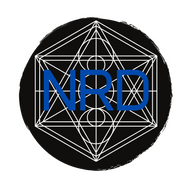Our Process

Our process for each item differs tremendously based upon the end use or goal of the finished NRW product. Some have high heat tolerance and specialized resin systems to endure chemical or varying temperatures. Others are pure beauty parts that seldom require any harsh environments. While not all parts are made the same we can illustrate the basic steps to each for the best possible base result - regardless of its defined use after.
At the start is the planning phase, team members both new and tenured will review the part and assign it to the NRW CarbonSmith best suited for the project. Once assigned to the CarbonSmith here they will begin our SOP - Defined by thousands of hours of product development.
First Phase is to test lay the fiber chosen by the client to ensure best alignment of fibers relation to the curvatures of the part. Some complex high density weaves do not work well on 3 axis of curve and require special attention or cutting to allow for bonding. Once we have a base line of the "layup" we then review the actual substrate (your part) we are bonding. This is important to understand the bonding characteristics of the fiber to the base part. Some ABS plastics require a texture blasting or heat to change the surface for a mechanical acceptance to the Epoxy Resin. Aluminum bases however require aggressive hand/machine tooling prior to bonding and will get a coating to ensure the toothing we inlay does not show through the fiber in the end.
We then "Infuse" the Carbon Fiber cloth to the surface using a special high build epoxy gel system that has a high viscosity, non blushing and extremely strong bond. Hand laying the material on all parts, we then coordinate custom "high elongation bags" to insert the parts and seal shut via Impulse. Each bag contains a vacuum manifold to allow for air to be removed across the entire bag for equal pressure zoning. With full vacuum attained the parts are now being forced in every aspect to bond to the new surface fiber. As vacuum increases, air is displaced by epoxy resin creating dense fiber contact onto your part with great pressure. Epoxy resin will also boil at room temperature much like water in a vacuum chamber, when this occurs the epoxy will release air bubbles and de-gass in the same instance.
They are then placed into the our 96" oven to bake via convection heating and direct infrared ramping from 160*F-190F @ 6 hours. This gives a high heat cure cycle for temperature tolerance and other benefits. Room temperature curing in contrast (As seen on youtube or most all "hobby pro" DIYers) can cause issues after the part is completed. These issues stem from the Epoxy Resin being a exothermic reactive polymer. The joining of three-dimensional cross-linked thermoset structures creates a heat reaction which is the transition of energy as it begins to catalyze. Adding energy or heat while the cure is occurring will promote the cross link branching lowering the viscosity of resin - allowing for greater penetration into the fibers plus:
- Benefits of heat curing:
- Greater bonding strength
- Surface Hardness
- Rigidity
- Toughness and impact resistance.
- Broader Chemical resistance
- Higher Thermal resistance
- Issues with ambient open air curing:
- Imprinting (fiber texture pushes through the surface and leaves an embossed texture [Can be UV clear related also])
- Delamination (fiber lifts off the part and it gets worse over time)
- Wavy surfaces (fiber has lifted off under surface leaving voids which is also delamination again)
- High heat warping (base part and fiber do not flex the same when hot, causes "curling")
- Easily damaged (low resistance to sudden impact or long term vibration)
More to come as we will be writing content for this with images from our shop. Bear with us. - Team NRW 11/06/19
